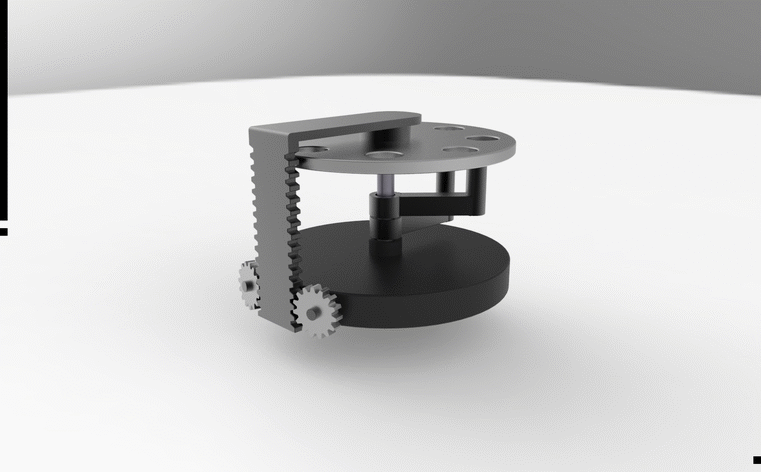
This project won a 2018 Red Dot Design award in the Product Design category.
This project was developed for the class IACT 375, Cognitive and Perceptual Human Factors under professor B.C. Hwang, in collaboration with fellow UX designer Cody Reppert. Our assignment was to create a design solution within the Internet of Things. Over the course of 9 weeks, my team of two decided to tackle struggles relating to knee surgery recovery. The new connections our solution provided allows a patient to heal faster and stay connected with their physical therapist.
My role
-
Industrial Design Lead
-
3D Modeler
-
3D Animator & Renderer
-
Visual Design Coordination
-
Physical Prototyping
-
Ideation
-
Primary & Secondary Research

Flexion
Problem
“Only 30% of physical therapy patients are completely adherent with their plan of care.”
“If not rehabilitated properly, a patient has a 45% risk of tearing their new ACL.”
Knee surgery can immobilize patients forcing them to be out of work for weeks to months at a time ensuing financial repercussions.
How might we…
Create an IOT device that allows patients to recover maximum range of motion with little to no effort, therefore making the process simpler for everyone?

A smart brace joint that allows patients to dynamically increase range of motion through normal, daily activity while relieving pressure and providing real time analytics to the physical therapist & doctor.
Solution
The lock

The locking mechanism consists of several moving parts in order to allow complex control over angle adjustments needed for knee surgery recovery.
The cheeseplate lowers over the adjustment pins through an L-gear that functions like a typical worm/gear system. The adjustments are made based off data received from the physical therapist, which the mechanism accesses through Bluetooth via the Arduino Lilypad.

Initial conceptual model/animation of functioning mechanical part.

The mechanism is encased by a tough outer shell that is roughly 2.5 inches in diameter.
The LED ring on the exterior flashes blue when the
mechanism is being unlocked to perform daily
stretches. The ring flashes green and red when
stretches and exercises are performed correctly
and incorrectly, respectively.
Professional Interface


The physical therapist (PT) is able to quickly view a patient's profile and overall progress. They are able to effortlessly make a change to the patient's assigned range of motion based off of pain data, rate of improvement, and exercise success.
The PT can be assured that their patient is recovering to the best of their ability even when they are not able to make a therapy session, and give suggestions and tips knowing that their advice is being followed.
Patient Interface






The patient interface allows the user to quickly view and complete their daily exercises alongside long-term goals and improvement.
Should a physical therapist make any adjustments to an exercise list or assigned range of motion, the patient will receive a notification and be able to quickly understand and accept the change.
Research
Primary
Throughout our research process, we interviewed 20+ individuals from rhinoplasty patients to prospective medical students to orthopedic surgeons.
Survey results
Age
0% - under 18
63% - 18-24
33% - 25-55
4% - 55+
Infection
82% believe they can identify an infection
Major identifiers:
Color: 66%
Pus/Drainage: 63%
Pain: 50%
Pain medication
Positive experience: 57%
Negative experience: 33%
No experience: 10%
Time before returning to doctor due to pain
24 hours or less: 28%
2-5 days: 41%
1-2 weeks: 28%
2+ weeks: 3%
Specific grievances
36% - lengthy healing process
31% - pain management
15% - quality or competency of doctor
28% - difficulty of everyday activities
21% - restricted mobility
Secondary Research
Approx. 700,000 knee replacement surgeries per year in the US
Projected to increase to 3.48 million by 2030 [1]
Approx. 200,000 ACL related injuries occur in the US every year [2]
Approx. 700,000 partial meniscectomies in the US each year [3]
44% of all total knee replacement surgery recipients still feel persistent pain 3-4 years post surgery
If physical therapy is not properly performed and practiced, patients may lose full range of motion (ROM) post-surgery
Tools like the CPM machine may aid in returning to full ROM
Prototype
Development
The shells and mechanical parts were 3D printed separately and assembled by hand. The mechanical parts were printed in color, but the shell pieces were all hand-finished.





The shells were printed in three pieces. The casing for the mechanics was about 2x larger than the ideal size in order to have the 3D printed mechanics be big enough to function, and that casing had two pieces.
The third piece is the ideal product size, which was used in our vision video.
Each piece was primed with 6 layers of filler primer, then painted with 6 layers of Dupli-color, and finished with clear coat from the same brand.
The logos were hand-painted with acrylic paint and sealed with epoxy resin.
In the end, I was able to create a working model of the mechanical pieces we designed for the lock, complete with all necessary moving parts to demonstrate its function, as well as its casing to demonstrate its overall form and relative size.


